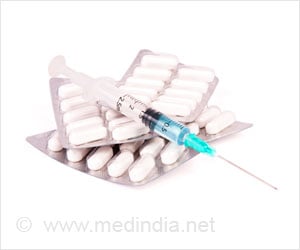
‘Practical, evidence-based recommendations on the use of drug testing has been provided in a new consensus document by The American Society of Addiction Medicine.’
Tweet it Now
"Drug testing is a valuable tool for supporting patients in addiction treatment, and this comprehensive set of recommendations should prove useful to providers in a variety of addiction treatment settings," comments Margaret Jarvis, MD, DFASAM, Chair of ASAM's Quality Improvement Council.The Consensus Document and supplemental digital content are available on Journal of Addiction Medicine and ASAM websites.
Evidence-Based Recommendations Aim at 'Smarter' Approach to Drug Testing
The Consensus Document provides practical guidance on the use of drug testing across the many clinical settings in which addiction treatment is provided. Based on evidence from more than 100 research studies, the document's recommendations were developed by a multidisciplinary panel, following an established "Appropriateness Method" process that combines scientific evidence with the collective judgment of experts.
The resulting recommendations focus on "when, where and how often it is appropriate to perform drug testing" in clinical addiction medicine. Based on evidence that drug testing aids in monitoring adherence and abstinence in treatment and can improve patient outcomes, drug testing "should be widely used in addiction treatment settings."
Drug testing should serve as a therapeutic tool, rather than a punitive one: "Providers should utilize drug testing to explore denial, motivation, and actual substance use behaviors with patients."
Advertisement
The Consensus Document addresses a wide range of daily issues encountered in the process of drug testing, including the choice of tests and appropriate response to test results. Urine tests remain by far the most common category of tests, but are also the most prone to tampering. There is growing interest in using other types of samples for drug testing, although more evidence on these tests is needed.
Advertisement
The document addresses many other elements of testing programs, including documentation and patient confidentiality, practitioner education and expertise, and test facilities and devices. Issues in inpatient and outpatient treatment as well as opioid treatment services are discussed, along with issues related to special populations, including adolescents, pregnant patients, people in recovery, and health and other professionals. The expert panel also makes recommendations for further research to address gaps in each area.
A previous ASAM White Paper made broad suggestions to improve drug testing in clinical practice, emphasizing a "smarter" approach to drug testing--including avoiding some inappropriate and high-cost practices followed in the past. "The current crisis has many people in desperate need of high-quality addiction care, but many, professionals included, have no way of judging the quality of this kind of treatment," comments Dr. Jarvis. "This document helps to define that high-quality care."
Source-Eurekalert













